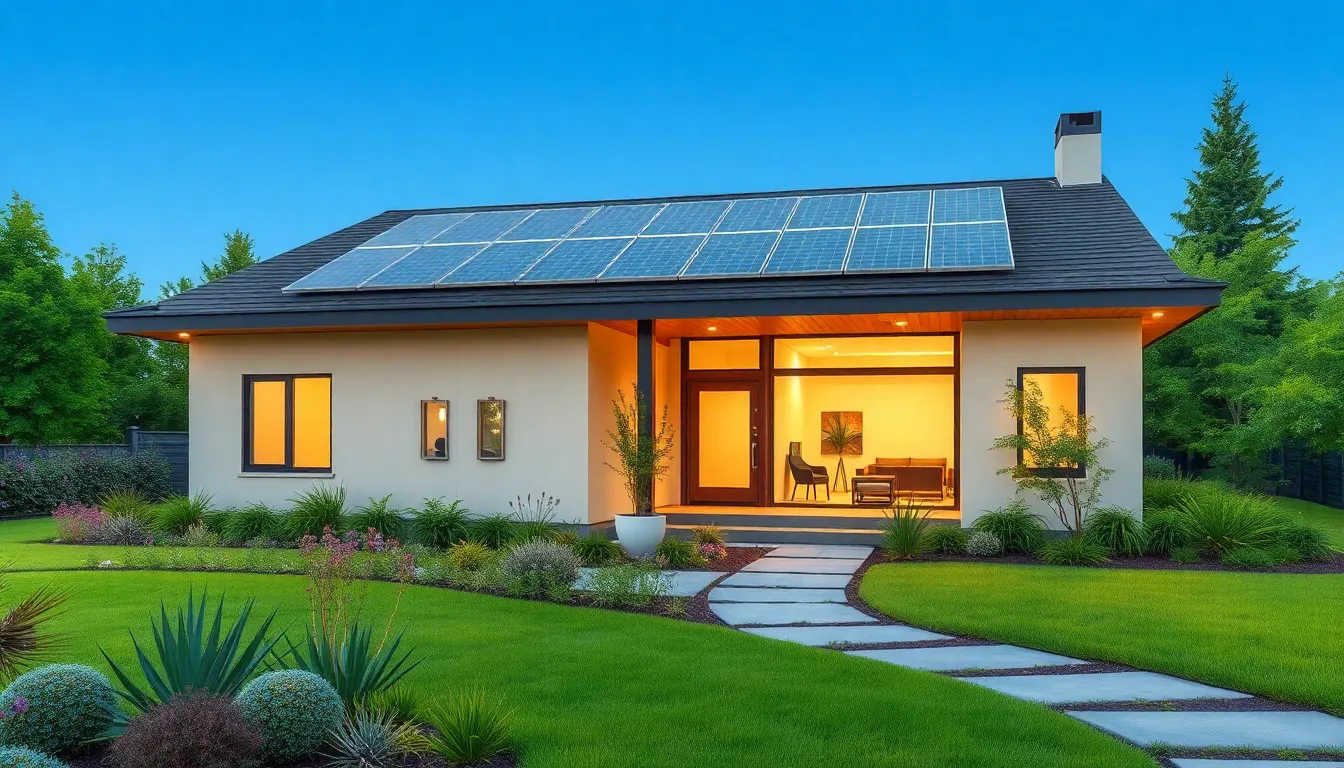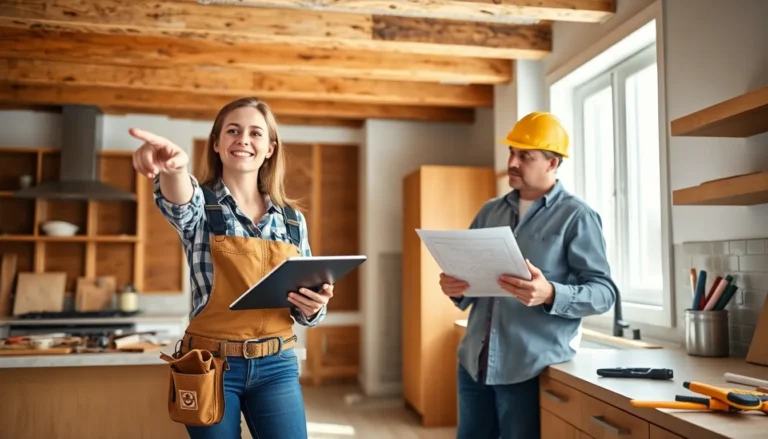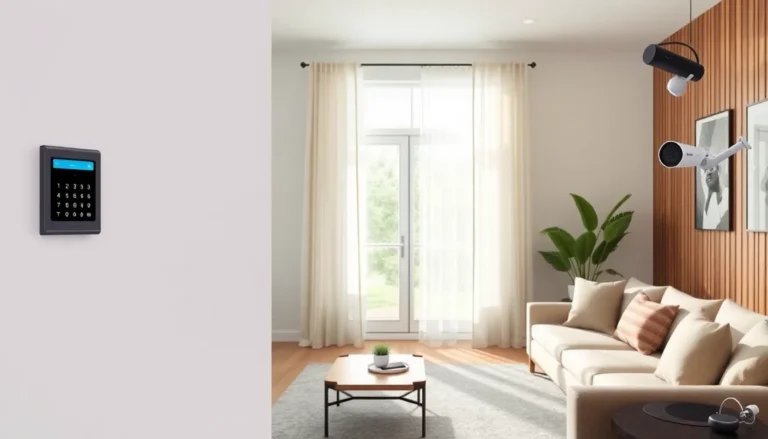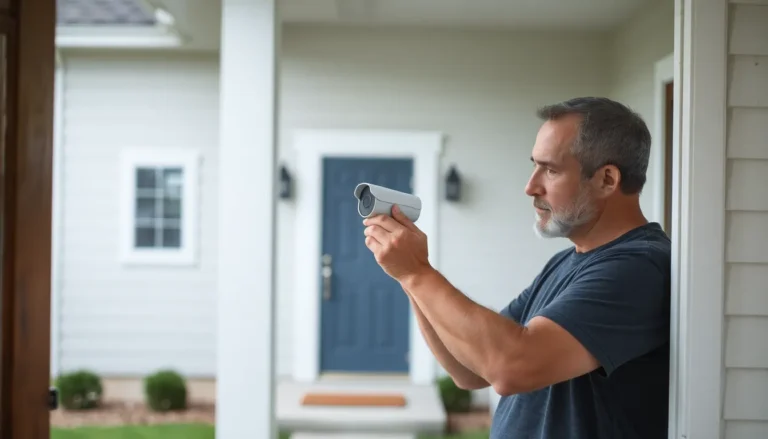Imagine living in a home that not only looks stunning but also gives Mother Nature a high-five every time you turn on the lights. Eco-friendly homes are the superheroes of the housing world, combining style, comfort, and sustainability. They’re like that friend who always brings a reusable bag to the grocery store and somehow makes it look cool.
Table of Contents
ToggleOverview of Eco-Friendly Homes
Eco-friendly homes prioritize sustainability while offering attractive living spaces. These residences use energy-efficient designs and renewable resources to reduce environmental impact. Many elements contribute to their eco-friendliness, including sustainable building materials, efficient insulation, and solar panels.
Sustainable building materials like bamboo, reclaimed wood, and recycled steel minimize the ecological footprint. Efficient insulation techniques control indoor temperatures effectively, reducing energy consumption. Solar panels harness sunlight, providing renewable energy that powers various household systems.
The benefits of eco-friendly homes extend beyond environmental conservation. Homeowners experience lower utility bills and increased property value. Studies show energy-efficient homes sell for approximately 10% more than conventional homes.
Innovative eco-friendly technologies play a significant role in these homes. Smart thermostats manage heating and cooling efficiently, optimizing energy use. Rainwater harvesting systems collect and store rainwater, promoting water conservation.
Design principles in eco-friendly homes enhance the overall aesthetic. Natural lighting, open spaces, and organic materials create inviting environments. These design choices not only boost comfort but also encourage a deeper connection with nature.
Communities increasingly embrace eco-friendly practices. Local governments often provide incentives, such as tax credits, to encourage green building initiatives. This growing trend demonstrates a collective commitment to environmental responsibility and sustainable living.
Benefits of Eco-Friendly Homes

Eco-friendly homes deliver significant advantages for both the environment and economic situations. These benefits contribute to a more sustainable future.
Environmental Impact
Eco-friendly homes reduce the overall carbon footprint by employing energy-efficient designs and renewable resources. Emission reduction stems from effective insulation, which minimizes heating and cooling demands. Sustainable building materials, such as bamboo and recycled products, lessen the strain on natural resources. Natural habitats often thrive due to decreased land disturbance during construction, promoting biodiversity. Water conservation methods, including rainwater harvesting systems, directly contribute to environmental health. Overall, these homes foster sustainable living practices, encouraging a greener planet.
Economic Advantages
Owning an eco-friendly home leads to lower energy costs. According to studies, residents of energy-efficient homes spend up to 30% less on utilities. Increased property values also play a role, as eco-friendly homes sell for approximately 10% more than conventional houses. Government incentives provide financial perks for sustainable building, helping offset initial costs. Resale value often remains high in markets that favor eco-conscious living. Homeowners enjoy long-term savings combined with a stable investment, enhancing economic stability.
Features of Eco-Friendly Homes
Eco-friendly homes incorporate various features that promote sustainability and environmental responsibility. These elements work together to create a comfortable and efficient living space.
Sustainable Materials
Using sustainable materials forms the foundation of eco-friendly homes. Bamboo, for instance, grows quickly and requires minimal resources, making it an ideal choice for flooring and cabinetry. Reclaimed wood offers history and character while reducing the demand for new lumber. Additionally, recycled steel provides durability for structural elements without depleting natural resources. Selecting low-VOC paints contributes to better indoor air quality, enhancing the home’s overall healthiness. Homeowners benefit from reduced environmental impact through these thoughtful material choices.
Energy Efficiency
Energy efficiency defines eco-friendly homes, often featuring designs that maximize natural light and minimize energy consumption. Advanced insulation techniques ensure that heating and cooling systems work optimally, keeping indoor temperatures stable. Solar panels generate renewable energy, significantly lowering utility costs. Smart thermostats further enhance energy use, allowing homeowners to monitor and control heating and cooling remotely. Studies reveal that energy-efficient homes can reduce utility bills by up to 30%, making these upgrades economically advantageous and environmentally responsible.
Water Conservation
Water conservation plays a crucial role in eco-friendly home design. Implementing rainwater harvesting systems allows homeowners to collect and reuse rainwater for landscaping and non-potable purposes. Low-flow fixtures, such as faucets, toilets, and showerheads, significantly reduce water usage without sacrificing performance. Landscaping with drought-resistant plants minimizes irrigation needs while enhancing aesthetic appeal. These practices help preserve local water resources and promote sustainable living. Overall, a focus on water conservation strengthens the eco-friendliness of a home, reinforcing its environmental benefits.
Designing Eco-Friendly Homes
Eco-friendly homes integrate sustainable design principles to create a balanced environment. Thoughtful planning and architecture are essential for maximizing energy efficiency and functionality.
Planning and Architecture
Effective planning and architecture prioritize energy use and resource efficiency. Designs should optimize natural light through strategically placed windows and open layouts. Orientation of the home influences passive solar heating, which reduces heating costs. Incorporating green roofs can improve insulation and enhance biodiversity. Efficient materials like recycled steel and sustainably sourced wood play a crucial role in minimizing ecological footprints. Homes constructed with durable materials require less maintenance, promoting long-term sustainability.
Landscaping for Sustainability
Sustainable landscaping enhances the yard’s aesthetic while conserving resources. Native plants require fewer resources, making them ideal for eco-friendly homes. Implementing xeriscaping techniques reduces water use through efficient irrigation practices. Rain gardens help manage stormwater runoff, preventing erosion and improving water quality. Organic mulch contributes to soil health by retaining moisture and suppressing weeds. Permeable paving materials reduce impermeable surfaces, allowing water to seep into the ground. Thoughtfully designed outdoor spaces support biodiversity and enrich the home environment while reducing environmental impact.
Eco-friendly homes represent a harmonious blend of style and sustainability. They not only enhance the living experience but also contribute to a healthier planet. By prioritizing energy efficiency and utilizing sustainable materials, these homes offer significant economic benefits while promoting environmental responsibility.
As communities embrace eco-friendly practices, homeowners can take pride in their contributions to a greener future. With the added advantages of lower utility bills and increased property value, investing in an eco-friendly home proves to be both a smart financial decision and a commitment to sustainable living. The future of housing is bright and green, and the shift towards eco-friendly homes is a step in the right direction.



